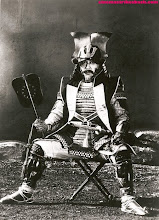Watched the entire set over 4 nights, - excluding Sunday, - from Thursday 27th May through the following Monday, and right now I'm only looking forward to watching and enjoying it again.
What quickly struck early on in my viewing of the first of the four opera of the cycle, 'Das Rheingold', was just about how much fun it is.
Of course opera was far more the 'mass entertainment' for contemporary audiences than the 'elitist' art form it is these days, and Wagner, perhaps more than any pre-20th Century composer, helped to foster this notion among 20th, and 21st Century audiences.
Musically, for the most part, the stereotypical doom-laden power chords are all pervasive, - although 'Siegfried' music is for the most part a gentler, more lyrical score as befits the initial optimism attaching to the doomed hero, - but while this befits its grand, and ultimately tragic, theme, the score is composed of many layers, and many moods.
Theatrically, I thought I detected many sources, or resonances in this production:
sources, Grimms Fairy Tales; Grand Guignol horror; pantomime villains, while it seems to have influenced Brecht, German Expressionism, and probably any number of operatic composers that followed.
(admittedly Chereau's version is considered a fresh and revolutionary take so what I detected may not have been part of Wagner's original vision)As befits an operatic 'cycle' much of what followed 'Das Rheingold' linked back to it, and eventually came full cycle, in the climactic final opera, 'Gotterdamerung'.
Apparently, 'The Ring' is composed of a large number of intricately and meticulously constructed 'motifs' so its construction and musical brilliance can better be appreciated when one is armed with these details.
I think I'll delay studying that until my 4th, or 5th viewing of the Cycle.
Right now, there's far too much to derive from viewing it as sheer ENTERTAINMENT genius!

